A ruptured eardrum is a tear in the tissue that is between the ear canal and middle ear. It is caused by either blunt trauma or a middle ear infection. If torn, it can impair your hearing permanently. If this injury should happen to you, seek medical help immediately.
Causes of a Ruptured Eardrum
There are many causes of a ruptured eardrum. While some are more common than others, they all can cause moderate to severe damage if not taken care of properly.
Middle Ear Infection – An infection in the middle ear causes fluid to remain inside. The fluid slowly builds pressure and can cause a tear or rupture to the tissue. This is the most common cause of an eardrum rupture.
Loud Noise – A loud noise can cause trauma and tearing of the eardrum using acoustics. The resulting sound waves can cause pressure inside the ear and affect the ear tissue.
Blunt Trauma – Blunt trauma of the ear can puncture and tear the eardrum. Using cotton swabs or any foreign materials inside the ear can cause the injury.
Head Trauma – Severe head trauma on the skull or the surrounding area can also cause eardrum rupture. Severe falls, injuries, or accidents can dislocate or damage the ear construction and ultimately affect the eardrum severely.
Barotrauma – When air pressure in your middle ear and air pressure in your environment are not in balance, this can cause severe stress to the eardrum. If severe enough, this will cause eardrum rupture. This is typically seen during air travel, deep water diving, or direct trauma to the ear.
How to Identify a Ruptured Eardrum
If you suspect you have ruptured your eardrum, look for the following signs and symptoms:
Bloody Drainage — There may be fluid draining from the affected ear. Take a clean tissue to clean the fluid that is outside of the ear canal. The fluid may be bloody, pus-filled, clear and watery, or a mixture of some or all of the described.
Ringing — A ruptured eardrum can also cause ringing, or tinnitus, in your ear.
Vertigo – You may experience a spinning sensation around you called vertigo. This can also cause prolonged nausea or motion sickness.
If you experience any of these symptoms or experience pain, aching, or general discomfort, call your doctor immediately.
Pre-Consultation Checklist
Write down any symptoms or experiences you are have before you arrive at your doctor’s office. Include your medical history, any recent events that may have exposed you to trauma or injury, and recent travel. In addition, provide any medicinal information that you are currently taking or have taken within the past six months to a year. Share your checklist with your doctor in order to give an accurate description of what is going on.
Medical Examination and Diagnosis
Schedule an appointment with your family doctor. The office may refer you to an ENT specialist to diagnose the issue.
Once in the office, your doctor will physically examine your affected ear. Using a medical instrument called an otoscope, the ear canal and surrounding area will be assessed with the lighted tool. The otoscope can magnify what is in the ear, giving the doctor a clear view of the canal and ear tissue.
The doctor may require further testing if it proves difficult to identify where the symptoms are coming from. At times, the tear or hole in the ear can be very small and undetectable even with the use of the otoscope.
If you suspect you have a ruptured eardrum, know the symptoms to look out for. #HealthStatus
Key Points
- 1Protect your ears from damage. Avoid foreign objects, loud noise and treat ear infections immediately.
- 2Consult with your doctor if you think you have an eardrum rupture.
- 3Follow the medical plan given to you by your doctor to heal your eardrum properly and to avoid further damage or hearing loss.
Home Remedies
After consultation and examination, your doctor may determine that the rupture is minor and no medical intervention is required. A few suggestions may be given to you to keep pain at bay and promote healing. It may include the following list.
Warm Compress — Place a warm and dry heat compress on your ear several times a day for 15-30 minutes at a time. The heat can help with any discomfort you may feel. Make sure you always use dry heat, as wet heat can cause moisture and condensation to fall back into the inner ear and cause infection and added pain.
Over-the-Counter Pain Medication – Your doctor may approve ibuprofen or acetaminophen for pain relief. Only take the recommended dosage at the appropriate times. Do not take any ear drops, unless prescribed or recommended, as this can exacerbate the pain and can cause infection.
Keep Air Passages Clear — Do not blow your nose or contain any congestion. Suction out any mucus you have gently and routinely. Any buildup or blowing can cause additional pressure to the ear. Do not use any saline solutions unless approved by your doctor.
Additional Testing
There are some tests that can be used to positively diagnose an eardrum rupture should you require additional examination.
Tympanogram — A medical apparatus is inserted in your ear canal and measures responsiveness of your eardrum to air pressure. Short bursts of air will be blown against the eardrum and the medical professional will check the response. Patterns of response can determine a perforation.
Tuning Fork Examination — Using a tuning fork, your doctor will determine if there is any hearing loss by striking the two-pronged instrument around your ear. If there is any hearing loss, it can also be determined if the loss is caused by certain areas in your ear including the sensors and nerves of the inner ear.
Audiology Examination — If the tuning fork examination does not give conclusive results, your doctor may order additional audio testing to be done. You will be put into a soundproof room and your hearing will be measured by your ability to hear different noises at varying pitches and volumes.
Lab Testing — If your ear has discharge or pus coming from the ear, your doctor may order a culture to determine infection and infection type. It is possible to identify if the fluid and resulting infection is coming from the middle ear.
If otoscope examination or any additional testing has come back positive for an eardrum rupture, your doctor will determine your treatment plan.
Treatment
Thankfully, the majority of eardrum ruptures will heal on their own and within a few months’ time. If there is any chance or signs of infection, you will be prescribed antibiotic ear drops or oral medication to be taken daily according to your doctor. If there is any pain associated with the rupture, your doctor may allow you to take certain over-the-counter pain medications or suggest additional pain treatment.
If the injury is more severe, or is not healing on its own, additional treatment will be needed to help close the perforation. The treatments may include the following:
Ear Patch — An ENT specialist may seal the hole or tear with an eardrum patch if it is slow to heal on its own. Depending on the severity and your medical history, local or general anesthesia is given. If using local anesthesia, it is commonly used with additional medicine that will help sedate you during the procedure.
The specialist will cut either behind your ear or inside the canal to gain access. If there is any infection or dead tissue, it will be cleaned out. If the hole is small, a gel or medical patch will be placed over the hole. This procedure only takes about 30 minutes.
Tympanoplasty — If the patch does not work, or your doctor determines it is not the correct course of treatment, you may be a candidate for surgery. Tympanoplasty is a surgery where the patch is made by your own grafted tissue or muscle membrane.
Typically, under general anesthesia, you should be able to go home the same day after the 2-3 hour process unless a condition warrants you stay for observation.
To protect the ear, ear packing material will be placed in the ear for the first week or so. A bandage or dressing can be placed in front for additional coverage.
After Treatment
There will be some guidelines to follow after your doctor’s examination. Whether your ear is healing on its own, or requires medical intervention, your doctor will require you to abide by the following rules.
Avoid Water — Do not allow water to go in the ear. This means no swimming or any water activity. When showering, place cotton, dressing, or bandaging coated with petroleum jelly in and around the outer ear. Wearing a shower cap is also recommended.
Avoid Ear Popping — Do not blow your nose or pop your ears in any way. If you must sneeze, do not hold it in, instead, sneeze with your mouth. Mucus should be suctioned or swallowed.
Avoid Traveling — Avoid any air travel. The pressure in the airplane can cause your ear to pop further, increasing the rupture and causing increased pain.
No Rubbing — Do not rub or aggravate the inner or outer ear. Take caution when wiping away any ear drainage or pus. Gently blot the area with a clean tissue.
Avoid Crowds — Avoid crowds so you will not be susceptible to any colds or illness.
In addition, always take the full course of medications that have been prescribed to you and do not use any over-the-counter or additional prescription medications that have not been approved by your doctor.
There may be some pain while your ear heals. This is normal and expected. If the pain is unbearable or changes intensity, consult with your doctor.
Total recovery will take several weeks. Once fully healed, hearing loss will be minimal to none, symptoms should be fully treated.
Post Treatment
Once several weeks have passed, your doctor will require you to visit the office for a final examination. An otoscope may be used to view the treated rupture and any follow up information will be given. Your doctor will outline some guidelines to follow to avoid getting an ear drum rupture again. They may include the following:
Treat Infection —- If you experience any signs of ear infection, seek treatment immediately. Typical symptoms include fever, earache and loss of hearing. Do not rub or tug on the ear.
Travel — Once you have been cleared for air travel, do not fly if you are sick or experiencing allergies. If you have congestion, this could cause additional damage to the ear due to the changing cabin pressures.
Always wear ear plugs, specifically during take-off and landing. Chew gum if you can or gently blow out the ears by plugging your nose and mouth to reduce ear pressure.
Protect Ears from Noise — Protect your ears from loud noises and environments. If you work in a space that is excessively noisy, use earplugs or muffs at all times. Vibrations can further damage or re-rupture the eardrum.
Foreign Object — Avoid cleaning your ears with swabs or any other object. If you have earwax or debris build-up, schedule an appointment with your doctor to get the ear professionally cleaned. Putting a foreign object in the ear can result in additional damage if done wrong.
Treatment for an eardrum rupture typically does not require any medical intervention and can heal on its own within a short amount of time. Always consult with your doctor and follow the medical plan if you suspect you may have ruptured your eardrum. If left on its own, severe damage and hearing loss can occur.

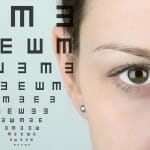
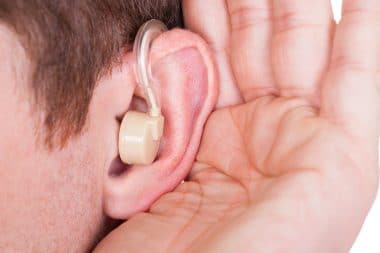

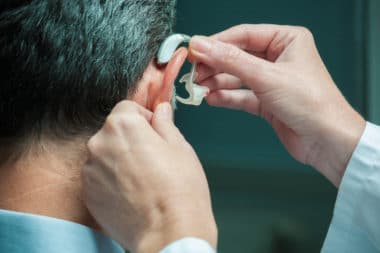
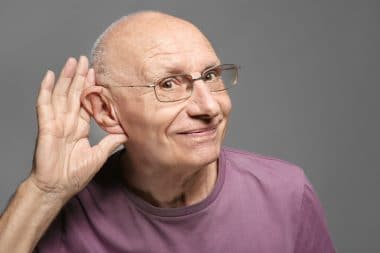
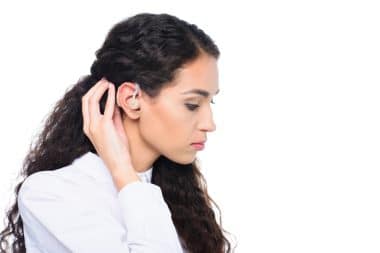

Reply